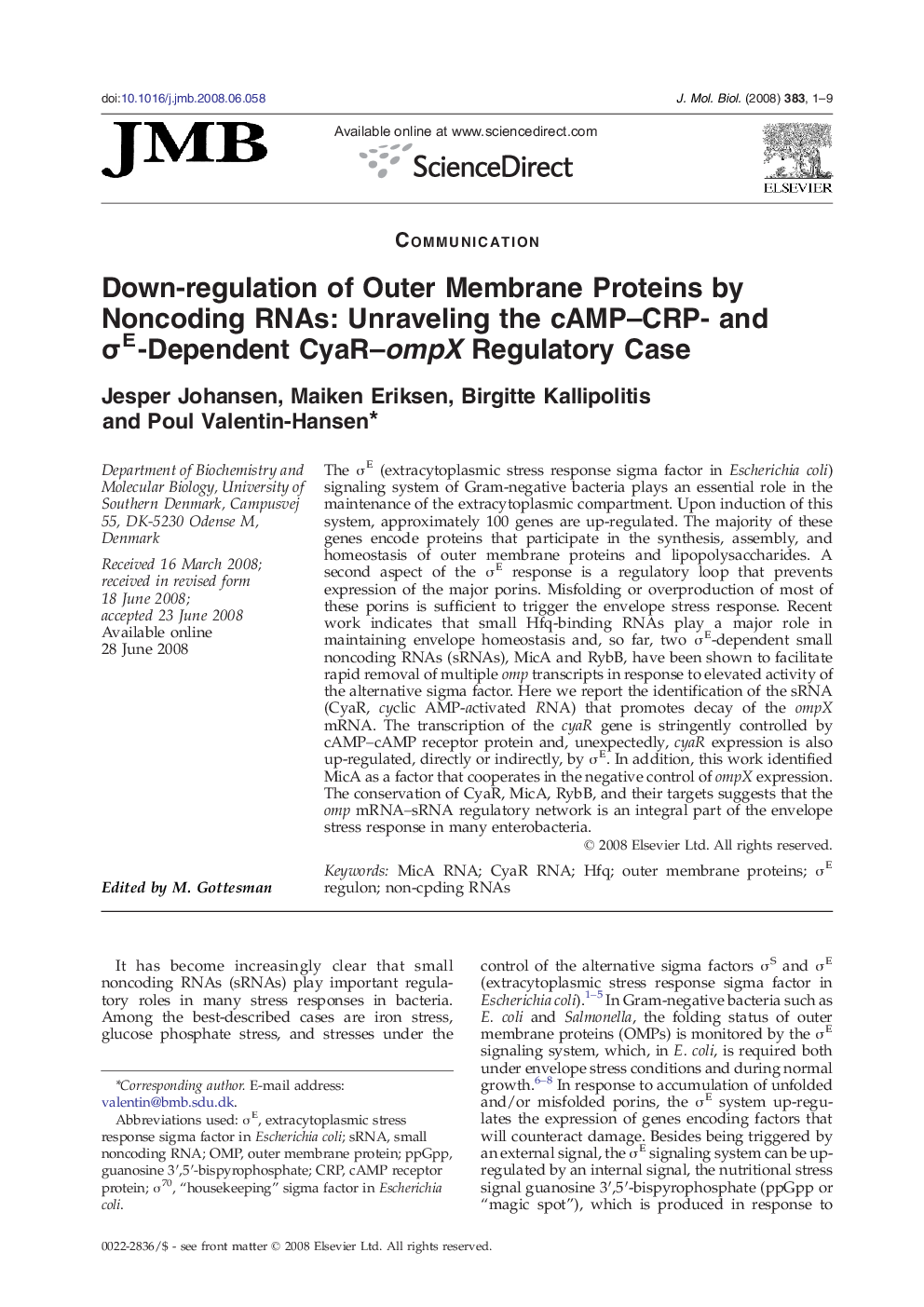| Article ID | Journal | Published Year | Pages | File Type |
|---|---|---|---|---|
| 2187252 | Journal of Molecular Biology | 2008 | 9 Pages |
The σE (extracytoplasmic stress response sigma factor in Escherichia coli) signaling system of Gram-negative bacteria plays an essential role in the maintenance of the extracytoplasmic compartment. Upon induction of this system, approximately 100 genes are up-regulated. The majority of these genes encode proteins that participate in the synthesis, assembly, and homeostasis of outer membrane proteins and lipopolysaccharides. A second aspect of the σE response is a regulatory loop that prevents expression of the major porins. Misfolding or overproduction of most of these porins is sufficient to trigger the envelope stress response. Recent work indicates that small Hfq-binding RNAs play a major role in maintaining envelope homeostasis and, so far, two σE-dependent small noncoding RNAs (sRNAs), MicA and RybB, have been shown to facilitate rapid removal of multiple omp transcripts in response to elevated activity of the alternative sigma factor. Here we report the identification of the sRNA (CyaR, cyclic AMP-activated RNA) that promotes decay of the ompX mRNA. The transcription of the cyaR gene is stringently controlled by cAMP–cAMP receptor protein and, unexpectedly, cyaR expression is also up-regulated, directly or indirectly, by σE. In addition, this work identified MicA as a factor that cooperates in the negative control of ompX expression. The conservation of CyaR, MicA, RybB, and their targets suggests that the omp mRNA–sRNA regulatory network is an integral part of the envelope stress response in many enterobacteria.
